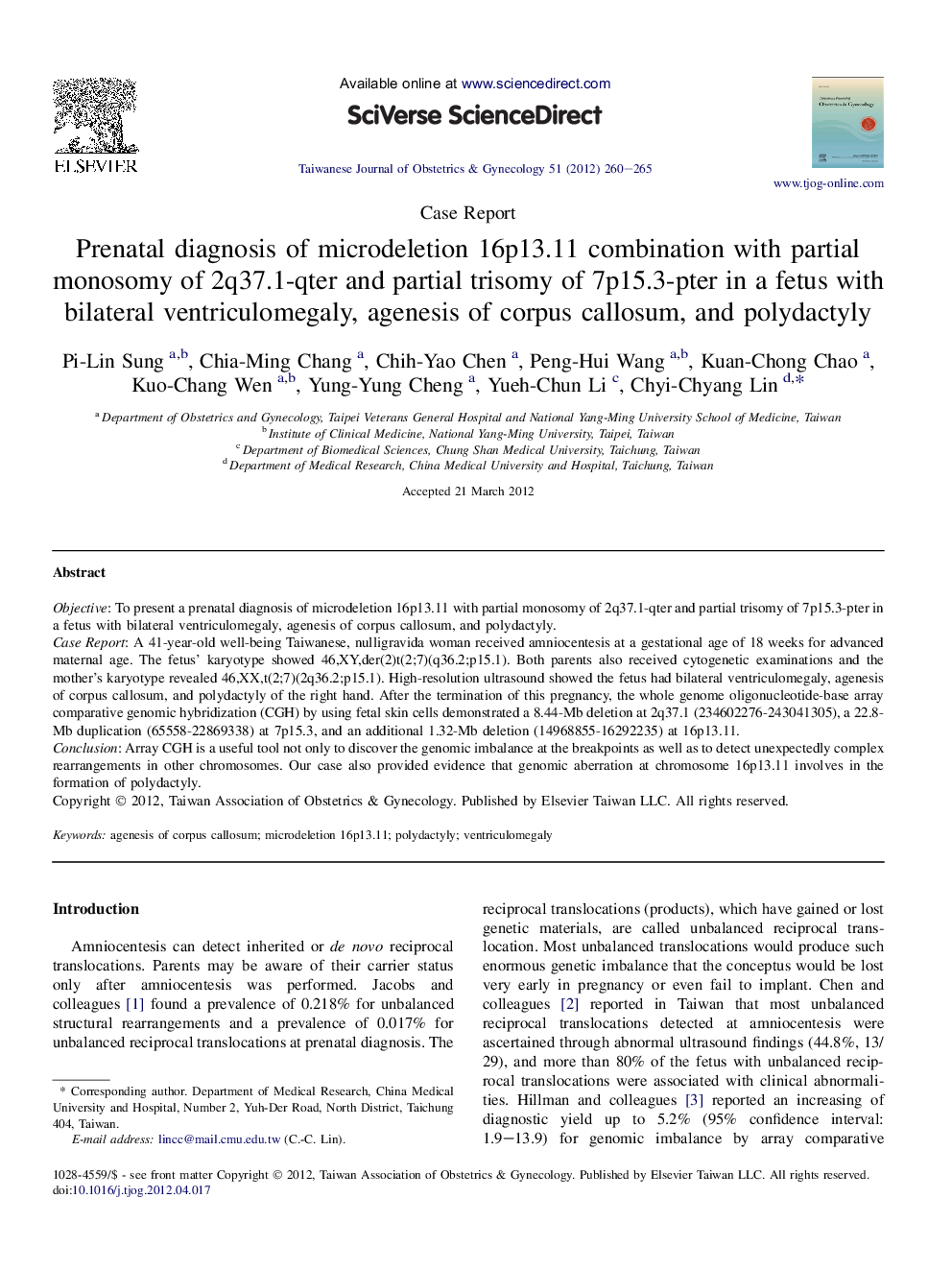| Article ID | Journal | Published Year | Pages | File Type |
|---|---|---|---|---|
| 3975437 | Taiwanese Journal of Obstetrics and Gynecology | 2012 | 6 Pages |
ObjectiveTo present a prenatal diagnosis of microdeletion 16p13.11 with partial monosomy of 2q37.1-qter and partial trisomy of 7p15.3-pter in a fetus with bilateral ventriculomegaly, agenesis of corpus callosum, and polydactyly.Case ReportA 41-year-old well-being Taiwanese, nulligravida woman received amniocentesis at a gestational age of 18 weeks for advanced maternal age. The fetus' karyotype showed 46,XY,der(2)t(2;7)(q36.2;p15.1). Both parents also received cytogenetic examinations and the mother's karyotype revealed 46,XX,t(2;7)(2q36.2;p15.1). High-resolution ultrasound showed the fetus had bilateral ventriculomegaly, agenesis of corpus callosum, and polydactyly of the right hand. After the termination of this pregnancy, the whole genome oligonucleotide-base array comparative genomic hybridization (CGH) by using fetal skin cells demonstrated a 8.44-Mb deletion at 2q37.1 (234602276-243041305), a 22.8-Mb duplication (65558-22869338) at 7p15.3, and an additional 1.32-Mb deletion (14968855-16292235) at 16p13.11.ConclusionArray CGH is a useful tool not only to discover the genomic imbalance at the breakpoints as well as to detect unexpectedly complex rearrangements in other chromosomes. Our case also provided evidence that genomic aberration at chromosome 16p13.11 involves in the formation of polydactyly.
